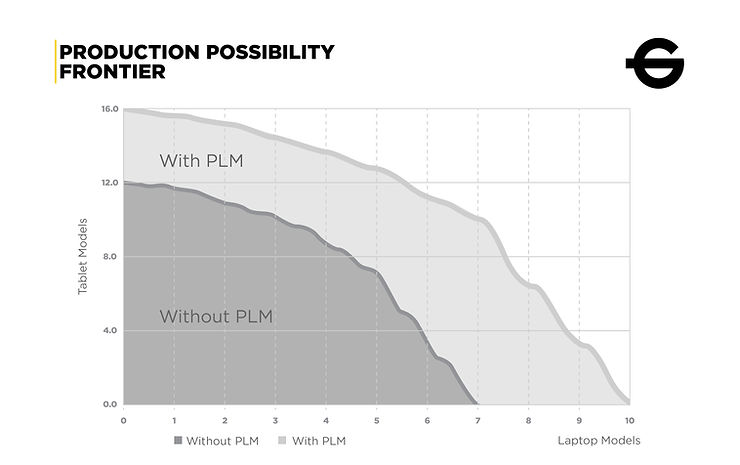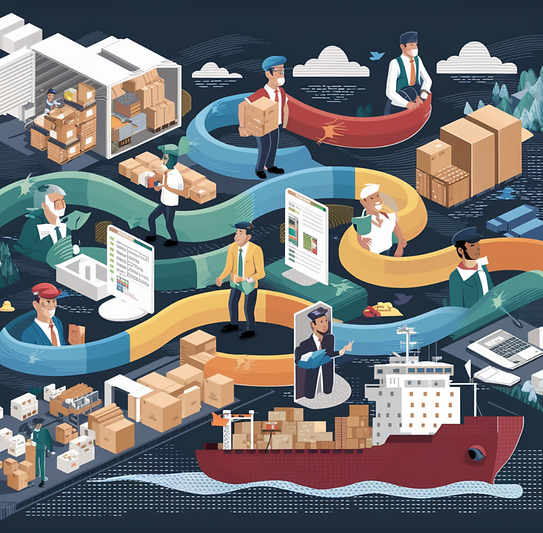Feeling overwhelmed by the complexity of managing hardware products from conception to disposal? Product Lifecycle Management (PLM) steps in as a strategic approach to navigate this process seamlessly. From the birth of an idea to the final product, PLM streamlines operations and reduces time to market. Essentially, it’s the backbone that keeps hardware production running smoothly from start to finish.

The three key components of Product Lifecycle Management (PLM)—Data Management, Collaboration, and Process Automation—form the foundational framework that supports the entire lifecycle of a product from inception to retirement. Each component is critical for optimizing the product development process, improving product quality, and reducing time-to-market.
1) Data Management
Data management in PLM involves the organization, storage, and retrieval of all data related to a product throughout its lifecycle. This includes design documents, engineering drawings, specifications, manufacturing data, quality standards, and customer feedback.
What Are The Benefits of Data Management?
- Centralization: Centralizing product information in one accessible, secure location eliminates data silos and ensures that all stakeholders have access to the most current and accurate information.
- Data Integrity: Robust data management practices maintain data accuracy and consistency, which are crucial for making informed decisions during product development and manufacturing.
- Regulatory Compliance: Effective data management helps ensure compliance with industry standards and regulations by providing a clear audit trail of product development activities and changes.
2) Collaboration
Collaboration in PLM refers to the tools and processes that enable effective communication and cooperation among various teams involved in product development, including design, engineering, manufacturing, and marketing.
What Are The Benefits in Collaboration?
- Cross-Functional Teamwork: PLM tools facilitate seamless interactions among disparate teams, ensuring that everyone is aligned with the project goals and timelines.
- Faster Decision Making: Real-time collaboration helps resolve issues and make decisions faster, reducing delays in the product development cycle.
- Innovation Enhancement: By fostering an environment where ideas can be shared freely across borders and disciplines, PLM supports innovative design and problem-solving.
3) Process Automation
Process automation in PLM involves using software tools to automate routine tasks, workflows, and approvals in the product development process, thereby minimizing manual intervention.
What Are The Benefits of Process Automation?
- Efficiency Improvement: Automation speeds up repetitive tasks like bill of materials generation, change requests, and approvals, allowing teams to focus more on creative and high-value activities.
- Error Reduction: Automated workflows reduce the chances of human error in data entry and process execution, which can lead to costly mistakes and product defects.
- Consistency and Standardization: Automation ensures that every step of the process is performed consistently and in compliance with predefined standards and procedures, leading to reliable and high-quality outputs.
What are the 7 Stages of PLM in Hardware Manufacturing?
Product Lifecycle Management (PLM) is a systematic approach used to manage the stages a product goes through, from its inception to its eventual retirement. This framework is particularly crucial in industries like hardware manufacturing, where products must evolve through multiple stages efficiently and cost-effectively. Here’s a breakdown of each stage in the PLM process, along with typical activities, processes, and relevant examples from hardware manufacturing:
1) Initiation
- Activities: Idea generation, market research, feasibility studies, concept approval.
- Processes: Gathering customer insights, conducting competitive analysis, initial product specification and design concepts.
- Example: A hardware company might identify a market need for a more energy-efficient home appliance, such as a refrigerator. This stage would involve brainstorming product features, conducting surveys to understand consumer preferences, and assessing technological feasibility.
2) Development
- Activities: Detailed design and engineering, prototyping, testing, and validation.
- Processes: CAD modeling, stress tests, usability testing, design revisions based on feedback.
- Example: The refrigerator design is finalized using CAD software, prototypes are built, and various tests (like energy consumption and cooling efficiency) are conducted to ensure the product meets specified standards.
3) Manufacturing
- Activities: Production planning, tooling, procurement, assembly line setup, quality control.
- Processes: Establishing supply chains, scheduling production, setting up manufacturing equipment, implementing quality assurance protocols.
- Example: The company sets up assembly lines for the new refrigerator model, sources components from suppliers, and integrates automated systems to improve assembly efficiency.
4) Launch
- Activities: Marketing, distribution setup, sales strategies, customer service preparation.
- Processes: Creating marketing materials, training sales staff, establishing distribution channels, setting up customer support systems.
- Example: A launch event is organized to introduce the new refrigerator model. Marketing campaigns highlight its energy-saving features. Distribution agreements are made with major retailers.
5) Growth
- Activities: Market expansion, scaling production, ongoing marketing, customer feedback collection.
- Processes: Analyzing sales data, adjusting marketing strategies, expanding market reach, continuous improvement based on customer input.
- Example: As sales increase, the company expands its manufacturing capabilities. Customer reviews and feedback lead to minor adjustments in design and features.
6) Maturity
- Activities: Cost optimization, market saturation management, exploring new markets, product variations.
- Processes: Reducing production costs, modifying marketing tactics to differentiate from competitors, exploring export options.
- Example: The refrigerator is now well established. The company focuses on reducing costs through more efficient manufacturing techniques and materials, and introduces variations (like different sizes or colors) to sustain consumer interest.
7) Decline
- Activities: Phasing out products, inventory management, after-sales support, planning for product end-of-life.
- Processes: Gradual reduction in production, selling off excess inventory, maintaining support for existing customers, recycling or repurposing materials.
- Example: Eventually, newer models or technologies replace the existing refrigerator model. The company plans for a phased withdrawal, continues to offer support for existing customers, and recycles unusable components.
A Case Study on Implementing PLM in Hardware Manufacturing

Integrating PLM boosted a tech company’s production from 12 to 16 tablet models and 7 to 10 laptop models, showcasing enhanced efficiency and market readiness.
Conclusion
Product Lifecycle Management (PLM) serves as a critical framework in hardware manufacturing and other industries, ensuring the smooth transition of a product through all its life stages—from initiation to decline.
By implementing PLM, organizations can achieve several strategic benefits.
- Enhanced Efficiency: PLM streamlines every phase of the product lifecycle, reducing time-to-market and enhancing the overall productivity of the development and manufacturing processes.
- Improved Product Quality: Through rigorous data management, collaborative efforts across teams, and automated processes, PLM helps maintain high quality and consistency in products, meeting consumer expectations and compliance requirements.
- Cost Reduction: By optimizing operations and preventing errors early in the lifecycle, PLM can significantly lower costs associated with rework, scrap, and delays.
- Innovation Facilitation: PLM fosters an environment where innovation is encouraged and efficiently managed, allowing companies to stay competitive in rapidly evolving markets.
- Regulatory Compliance: With built-in processes for managing compliance, PLM simplifies adherence to regulatory standards, reducing the risk of fines and product recalls.
- Market Responsiveness: PLM enables companies to quickly adapt to market changes and customer feedback, ensuring that products remain relevant and meet market needs effectively.
Therefore, PLM is not just about managing a product’s lifecycle; it’s about enhancing every aspect of that journey to maximize success and sustainability. As technology evolves and consumer demands shift, PLM will continue to play a vital role in helping companies innovate and thrive in the competitive global marketplace.



